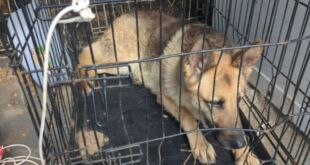Archaeologists conducting a dig at Wittenham Clumps in Oxfordshire have made a fascinating discovery – the remains of a 1,800-year-old tiny Roman dog, standing only 20 cm tall. The find was made at the site of a villa believed to have belonged to a wealthy Roman family.
Researchers describe this dog as one of the smallest ever found in the UK, and they believe it was likely a cherished and adored pet. The excavation was led by DigVentures, a social enterprise that organizes crowdfunded archaeological projects, at the site of the Earth Trust’s headquarters.
Zooarchaeologist Hannah Russ, who analyzed the animal remains, stated that although the dog’s small size could have made it suitable for hunting, evidence suggests that Romans in other parts of the empire began breeding and keeping smaller dogs as pets. The dog’s tiny size and bowed legs indicate it was not bred for hunting, which makes it more likely to serve as a lap dog, house companion, or beloved pet.

Maiya Pina-Dacier from DigVentures commented on the significance of the discovery, mentioning that the villa where the remains were found was likely occupied by a relatively wealthy Roman family who owned various working animals, including hunting or herding dogs and this particular diminutive canine.
The excavation yielded other artifacts like a brooch, a copper bracelet, and the tiny dog’s remains. These historical finds will be exhibited for the first time at Earth Trust during the Clumps Go Ancient festival in August.
Earth Trust plans to showcase a pop-up exhibition featuring “never-before-seen artifacts” from the dig. The festival aims to bring to life the discoveries made about the people of Wittenham Clumps and their animals throughout history.
The area has seen human use and intervention throughout the ages, from the Iron Age communities that created the hillfort, now known as Castle Hill, to the Roman families who later resided downslope and the farmers and tenants who manage the land today.

 DogExpress
DogExpress


















 in Chandigarh, India.
in Chandigarh, India. 
